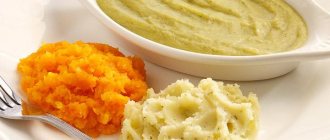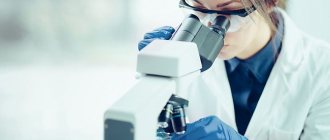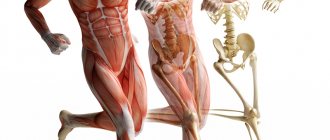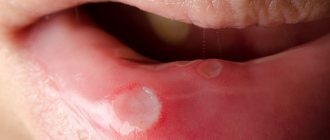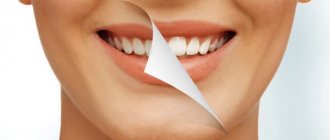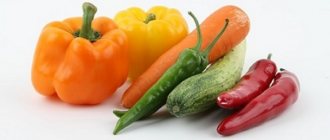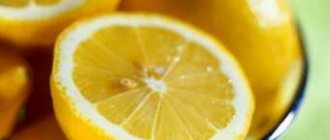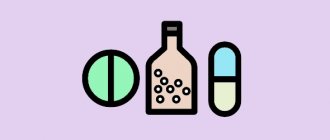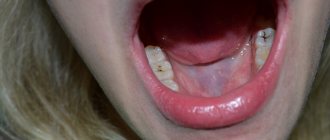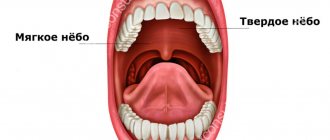Candidiasis is often called thrush and is one of the most common pathologies of the oral cavity. This disease is caused by the fungus Candida albicans.
Activation of the pathogen in the mouth occurs during a period of decreased local or general immunity. The result is increased proliferation of fungus on the cheeks, pharynx or tongue.
In addition to complex therapy prescribed by a specialist after examining the patient, following a diet for candidiasis in the oral cavity gives good results. It must be followed both during the treatment period and after its completion.
Refusal to use prohibited ingredients reduces the risk of exacerbation and helps establish positive dynamics of the pathological process. It also helps reduce the likelihood of relapse due to stress or a slight decrease in the functioning of the immune system.
A balanced diet using approved components provides a high chance of recovery even with a long and advanced pathological process.
Basics of nutrition for thrush
A diet for oral candidiasis, like any other diet, involves dividing all ingredients into two large categories:
- Allowed, which prevent the development of fungus in the mouth and stimulate local and general immunity.
- Prohibited. They create favorable conditions for the growth of the pathogen.
Eating only approved foods together with antifungal drugs enhances the effect of the prescribed course of treatment. It should be noted that the diet is very strict, but the result is noticeable just a few days after starting to follow it. The main goal of the diet is to activate the immune system, due to which the disease recedes much faster.
Causes and symptoms of the disease
Candidiasis of the esophagus can occur against the background of diabetes mellitus.
There are several reasons why a person becomes infected with esophageal candidiasis. Most often, the disease is diagnosed when a person comes into contact with a patient with candidiasis.
If the food that a person eats is contaminated with yeast, this leads to the appearance of the disease.
A fairly common cause of esophageal candidiasis is a weakened immune system. When using household items contaminated with fungi, the patient is also diagnosed with esophageal candidiasis.
The activity of the fungus of the genus Candida can be activated during injuries of the esophagus, the cause of which in most cases is undigested food. A decrease in the performance of the immune system is observed in patients during the period of taking corticosteroids. If a person uses antacid therapy for a long time, this can cause the disease. Very often, esophageal candidiasis occurs against the background of:
- Organ motility disorders;
- Lack of protein;
- Diabetes mellitus;
- Pregnancy;
- Immunodeficiency;
- Dysbiosis of mucous membranes.
The cause of the disease can be a variety of allergic reactions. Candidiasis also appears against the background of cancer. This disease is also often diagnosed with adrenal hypofunction.
When esophageal candidiasis appears, many patients do not experience symptoms, which greatly complicates the process of diagnosing the disease. When the disease appears, some patients experience decreased appetite.
Also, esophageal candidiasis can be accompanied by heartburn. During the course of this disease, swallowing disorders may be diagnosed. Most patients experience pain during this process.
Basics of a therapeutic diet
A balanced diet for candidiasis should include components such as:
- Low-fat varieties of fish and meat;
- Vegetables;
- Chicken eggs;
- Buckwheat.
- Products with antifungal effect.
Complex treatment is most effective with proper nutrition. These ingredients should form the basis of the diet. Experts attach great importance to the number of meals, as well as the temperature of the finished dish. The ideal solution would be to avoid salt and various seasonings.
They irritate the oral mucosa, creating a favorable environment for the growth of pathogenic microflora. Steamed or boiled foods are gentle on the oral cavity.
Complication
With timely treatment, candidiasis does not cause any particular harm to health. But the symptoms of candidiasis can cause a lot of discomfort. Long-term, it can lead to damage to other organs, most often the urethra, bladder and kidneys. In particularly severe cases, the progressive disease can affect the reproductive organs, leading to infertility in both men and women. But candidiasis poses the greatest danger to pregnant women, because... the risk of fetal damage is very high.
Prebiotics of natural origin
These components also help to cope with fungus in the oral cavity and increase the effectiveness of treatment. Prebiotics, according to experts, are complex polysaccharides that are not digested by enzymes.
As a result, they become excellent food for intestinal microflora and displace pathogenic microorganisms. Fructose-oligosaccharide is rightfully recognized as one of the most famous polysaccharides. Its maximum content was found in:
- Asparagus;
- Bananas;
- Onions and garlic;
- Jerusalem artichoke.
Introducing the above ingredients into your daily diet will reduce the risk of relapse and speed up the recovery process.
Fully or partially limited products
- Products containing additives and preservatives that can disrupt the balance of microflora.
- Eliminate all types of simple carbohydrates and products containing fructose, galactose, sorbitol, glucose, maltose. Fruit juices and sweet fruits should not be consumed.
- Use caution with nuts and dried fruits, which may contain invisible mold, and dried fruits may be high in fructose.
- Products containing yeast (kvass, baked goods and beer) are excluded. It is better not to eat grapefruits, lemons, pineapples, oranges, or tomatoes for a month, as they create an alkaline environment favorable for the growth of fungi.
- You should not consume all products that have an irritating effect: mayonnaise, ketchup, hot seasonings, horseradish, vinegar, mustard, salty and pickled foods, canned food and smoked meats. Mushrooms and blue cheeses are prohibited.
- Avoid fatty pork, duck and goose meat, fatty and smoked fish, and canned fish. Remember that fried foods promote the growth of yeast.
- From drinks you should exclude strong coffee and tea, beer, sweet juices, kvass, sweet water with carbonation and alcohol - all of them are provocateurs of candidiasis infection.
Table of prohibited products
| Proteins, g | Fats, g | Carbohydrates, g | Calories, kcal | |
Vegetables and greens | ||||
| canned vegetables | 1,5 | 0,2 | 5,5 | 30 |
| zucchini | 0,6 | 0,3 | 4,6 | 24 |
| potato | 2,0 | 0,4 | 18,1 | 80 |
| corn | 3,5 | 2,8 | 15,6 | 101 |
| carrot | 1,3 | 0,1 | 6,9 | 32 |
| canned cucumbers | 2,8 | 0,0 | 1,3 | 16 |
| squash | 0,6 | 0,1 | 4,3 | 19 |
| radish | 1,2 | 0,1 | 3,4 | 19 |
| white radish | 1,4 | 0,0 | 4,1 | 21 |
| turnip | 1,5 | 0,1 | 6,2 | 30 |
| beet | 1,5 | 0,1 | 8,8 | 40 |
| canned tomatoes | 1,1 | 0,1 | 3,5 | 20 |
| Jerusalem artichoke | 2,1 | 0,1 | 12,8 | 61 |
| pumpkin | 1,3 | 0,3 | 7,7 | 28 |
| horseradish | 3,2 | 0,4 | 10,5 | 56 |
Fruits | ||||
| avocado | 2,0 | 20,0 | 7,4 | 208 |
| pineapples | 0,4 | 0,2 | 10,6 | 49 |
| oranges | 0,9 | 0,2 | 8,1 | 36 |
| watermelon | 0,6 | 0,1 | 5,8 | 25 |
| pears | 0,4 | 0,3 | 10,9 | 42 |
| melon | 0,6 | 0,3 | 7,4 | 33 |
| figs | 0,7 | 0,2 | 13,7 | 49 |
| tangerines | 0,8 | 0,2 | 7,5 | 33 |
Berries | ||||
| grape | 0,6 | 0,2 | 16,8 | 65 |
Mushrooms | ||||
| mushrooms | 3,5 | 2,0 | 2,5 | 30 |
| marinated mushrooms | 2,2 | 0,4 | 0,0 | 20 |
Nuts and dried fruits | ||||
| raisin | 2,9 | 0,6 | 66,0 | 264 |
| dried apricots | 5,2 | 0,3 | 51,0 | 215 |
| dried apricots | 5,0 | 0,4 | 50,6 | 213 |
| dates | 2,5 | 0,5 | 69,2 | 274 |
Cereals and porridges | ||||
| corn grits | 8,3 | 1,2 | 75,0 | 337 |
| white rice | 6,7 | 0,7 | 78,9 | 344 |
Bakery products | ||||
| bread | 7,5 | 2,1 | 46,4 | 227 |
Confectionery | ||||
| jam | 0,3 | 0,2 | 63,0 | 263 |
| cake | 3,8 | 22,6 | 47,0 | 397 |
Chocolate | ||||
| chocolate | 5,4 | 35,3 | 56,5 | 544 |
Raw materials and seasonings | ||||
| mustard | 5,7 | 6,4 | 22,0 | 162 |
| yeast | 12,7 | 2,7 | 0,0 | 75 |
| ketchup | 1,8 | 1,0 | 22,2 | 93 |
| mayonnaise | 2,4 | 67,0 | 3,9 | 627 |
| honey | 0,8 | 0,0 | 81,5 | 329 |
| sugar | 0,0 | 0,0 | 99,7 | 398 |
| soy sauce | 3,5 | 0,0 | 11,0 | 58 |
| vinegar | 0,0 | 0,0 | 5,0 | 20 |
Dairy | ||||
| milk | 3,2 | 3,6 | 4,8 | 64 |
Meat products | ||||
| pork | 16,0 | 21,6 | 0,0 | 259 |
Bird | ||||
| smoked chicken | 27,5 | 8,2 | 0,0 | 184 |
| duck | 16,5 | 61,2 | 0,0 | 346 |
| smoked duck | 19,0 | 28,4 | 0,0 | 337 |
| goose | 16,1 | 33,3 | 0,0 | 364 |
Fish and seafood | ||||
| smoked fish | 26,8 | 9,9 | 0,0 | 196 |
Alcoholic drinks | ||||
| beer | 0,3 | 0,0 | 4,6 | 42 |
Non-alcoholic drinks | ||||
| cola | 0,0 | 0,0 | 10,4 | 42 |
| coffee | 0,2 | 0,0 | 0,3 | 2 |
| lemonade | 0,0 | 0,0 | 6,4 | 26 |
| Pepsi | 0,0 | 0,0 | 8,7 | 38 |
| sprite | 0,1 | 0,0 | 7,0 | 29 |
| black tea | 20,0 | 5,1 | 6,9 | 152 |
Juices and compotes | ||||
| apricot juice | 0,9 | 0,1 | 9,0 | 38 |
| Orange juice | 0,9 | 0,2 | 8,1 | 36 |
| * data is per 100 g of product | ||||
Probiotics for oral candidiasis
Is it possible to consume dairy products if you have thrush? If you follow the recommendations of experts, then yes! The goal of a therapeutic diet is to displace pathogenic microflora and gradually replace it with beneficial microorganisms.
Live yogurt and kefir are recognized as ideal sources of prebiotics. They also have a beneficial effect on the process of normalizing intestinal microflora and improve the digestion process.
Bifidobacteria and acidophilus, which are part of fermented baked milk, have a negative effect on Candida albicans. The use of fermented baked milk as a means of treatment and prevention is very effective. But such a diet should be used with caution in patients with a history of liver disease.
A high content of dairy products in the diet increases the load on the liver and can cause deterioration of the condition. Consultation with a nutritionist and therapist will help you choose their optimal amount in a person’s diet.
Basic recipes for the diet
With such a set of products that are allowed during the diet against thrush, you will want something non-standard, certain recipes. Of course, you can make it regularly by mixing different types of vegetables. Don't forget to add products from the list. It is also suggested to eat standard Korean side dishes such as carrots, celery, cauliflower, seaweed and other foods prepared in Korean style. This will allow you to significantly diversify your diet. You can also prepare smoothies, salads, and various snacks from vegetables, herbs and some fruits. As soon as thrush occurs, a diet during treatment will allow you to set the record straight once and for all. Of course, you can always resort to only medicinal methods. But they don’t always work, since the body needs constant help and support. This is the only way to rid your body of harmful fungus and begin to lead a healthy, active and fulfilling life. Candida is, unfortunately, a very common problem for many people. Candida symptoms are often ignored, undiagnosed, or misdiagnosed. An antifungal diet can reduce and eliminate candida and its unpleasant symptoms. Some dietary changes may end up being necessary in the long term if reintroduction of certain foods is not successful. In general, it is always best for your health to avoid sugary and processed foods. Real, whole, living food is the best choice.
Related posts:
How to get rid of evening cravings
EMS-Trainer myostimulator belt and all the truthful information about it
Accurate calorie counting
How to lose weight after 40 years
How to take insulin
Test check yourself:
fact or fiction?
Eating more fruit can improve bone density.
Correct! Wrong!
Consuming foods with plenty of bioavailable calcium improves bone density. Fruits generally do not contain much calcium.
Excess protein accumulates in the muscles, causing them to increase.
Correct! Wrong!
Once the need for protein and energy has been met, excess amino acids are converted to acetyl-CoA, from which they are converted into fatty acids and stored in adipocytes. Therefore, excess protein will not be converted into muscle.
What not to eat if you have thrush
Following your doctor’s recommendations for a healthy and nutritious diet and comprehensive treatment for oral candidiasis is the key to a speedy recovery. But there is a list of ingredients that must be excluded from your diet.
It is important to carefully ensure that they do not end up on the menu either raw or as part of any complex dishes.
So, you will have to stop using:
- Black tea. There is a possibility of the formation of invisible mold, which will have a detrimental effect on the patient’s health.
- Mushrooms of both forest and industrial origin.
- Buttermilk and sour cream. The only exception is fresh sour cream with a small percentage of fat.
- Mayonnaise, cheese.
- Dried fruits, since their surface may contain tiny mold.
- Drinks obtained on the basis of fermentation. This category includes strong alcohol, wine, beer, cider, kvass, mead, etc.
- Sprouted grains.
- Dishes containing monosodium glutamate. These are ketchups, ready-made wet condiments and soups, various dressings, all types of fast food.
- Vinegar. The only exception is apple.
- Medicines made from yeast. These are antibiotics, vitamin-mineral complexes, etc.
- Products containing refined white flour. This category of dishes includes sweet pastries, buns, cookies, pasta, muesli, etc.
- The ideal solution would be to replace animal fats with plant analogues.
- Sausages, fatty meats, various corned beef.
During the period of exacerbation of the disease, experts recommend excluding these dishes from the diet. Only after complete recovery and completion of the course of treatment should it be gradually introduced, observing the condition of the body. At the first alarming symptoms, it is necessary to contact a specialist in order to adjust the existing diet and continue treatment.
Carbohydrates are prohibited
A strict no-carbohydrate diet has worked well. It involves complete abstinence from foods such as:
- Sugar. It is important to exclude any form of it (honey, sand, condensed milk, refined sugar, syrups, etc.).
- All types of sweeteners (fructose, maltose, glucose, sorbitol).
- Any candy, as well as all types of chocolate.
- Sweet carbonated drinks, as well as packaged and bottled juices.
- Fruits and berries with a high sugar content (watermelon, raspberries, strawberries, bananas, grapes, melons, apples, etc.).
- Dairy products and milk. The only exceptions are fermented baked milk, live yogurt and fresh kefir.
- Vegetables with a high starch content. Potatoes and legumes can be consumed only a couple of times a week in the absence of alarming symptoms and persistent positive dynamics of the pathological process.
A no-carbohydrate diet requires some effort from a person. But after a few days the patient notices an improvement in his condition. By continuing treatment and adhering to the same meal plan, it is possible to obtain lasting positive dynamics.
Menu for oral candidiasis
Fungal diseases require a balanced diet. A proper diet includes a variety of foods. A strict diet does not mean eating just a few ingredients. If desired, you can develop a full menu for every taste. Let's consider possible food options for breakfast, lunch and dinner.
Breakfast for thrush
- Fresh cucumber salad, scrambled eggs, unsweetened green tea and whole grain bread;
- Sour cream and cottage cheese with a small percentage of fat, apple-carrot or carrot juice;
- Freshly squeezed orange juice, omelette;
- Tomato and herb salad, boiled eggs;
- Not sweet green tea and fruit salad in small quantities;
- Assorted nuts and oatmeal without sugar;
- Boiled fish or lean meat;
- Brown rice with boiled fish.
The main thing is to carefully monitor the absence of simple carbohydrates, and also avoid excessive consumption of dairy products.
Afternoon snack or snack
Meals for thrush should be fractional and as healthy as possible. Therefore, experts have developed several healthy snack options that can satisfy hunger and free a person from the desire to eat prohibited foods.
So, what can you snack on during the day:
- Green apple. It can be baked, steamed or fresh.
- A small handful of nuts.
- Live yogurt or kefir.
- Whole grain bread in small quantities, as well as homemade cheese.
- Orange or orange juice.
- Apple with low-fat cottage cheese.
Using the above products to satisfy hunger between main meals, the patient not only follows a diet, but also provides the body with necessary vitamins and minerals. This diet helps to activate the immune system and speed up the healing process.
Dinner
Among the allowed foods for oral thrush, experts include:
- Vegetable soups;
- Casseroles from lean meats;
- Boiled chicken breast and carrot salad;
- Tomato soup;
- Lean fish casserole;
- Pea soup;
- Buckwheat porridge or soup;
- Boiled or steamed vegetables;
- Lentil soup;
- Boiled meat;
- Steam cutlets;
- Beetroot;
- Chicken soup;
- Seafood.
Eating properly selected meals provides a complete diet, and split meals normalize metabolism and promote recovery.
Dinner dishes for oral candidiasis
Nutritionists suggest choosing several dishes for dinner as a tasty and healthy menu:
- Baked (or steamed) vegetables;
- Vegetable stew without seasoning;
- Eggplant cooked with rice;
- Potato roll with vegetables;
- Stuffed cabbage rolls;
- Zucchini or carrot fritters;
- Dumplings with cabbage or potatoes based on rye flour;
- Vegetable Salad.
To make your diet as healthy and effective as possible, you can follow a few simple rules:
- Purchase meat and fish products only from trusted places. Or on farms. Partially or completely replace pork with rabbit and lamb.
- Stop eating fried meat and switch to boiled or stewed foods.
- Introduce quail or turkey meat into your diet.
- Partially replace meat products with chicken or quail eggs.
- Reduce the amount of vegetable fats. Switch to steam or non-stick pan cooking. It is also better to reduce the consumption of animal fats.
- Increase the consumption of homemade fermented baked milk, yogurt, etc.
- Increase the amount of fiber in your diet.
Avoid eating fast food and processed foods. The manufacturer often includes components that are prohibited for you. This reduces to zero all the efforts spent on treating oral candidiasis. Strictly follow the recommendations of specialists, stick to your diet, and then the fight against thrush will be successful!
Diagnostics
To make an accurate diagnosis, a combination of several methods is used - from a simple examination and questioning of the patient for complaints to laboratory methods, such as culture, microscopic examination of biomaterial, analysis of the degree of contamination of the oral cavity with fungal mycelium.
Oral candidiasis is accompanied by a number of characteristic external signs, in particular the formation of plaque, bad breath, ulceration and hyperemia of the mucous membranes. However, laboratory methods make it possible to accurately determine the type of pathogen and exclude the possibility of a secondary infection, which may affect the nature and duration of treatment.
Differential diagnosis is used to separate cases of candidiasis from aphthous stomatitis, leukoplakia, lichen ruber, streptococcal infection and other infectious pathologies of the oral cavity.

